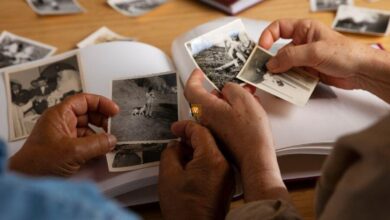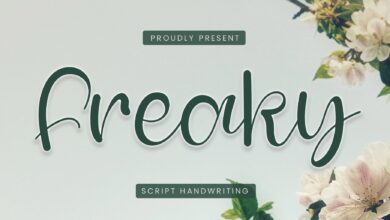10 Must-Have Items for Authentic Viking Attire

Ever wondered how to dress like a Viking? Whether you’re heading to a reenactment or simply fascinated by this historic culture, creating an authentic Viking look involves more than just putting on a horned helmet (which, by the way, is a common misconception).
Let’s take a deep dive into the must-have items that will give you a true Viking attire appearance. Read on to learn more about Viking fashion trends!
1. Woolen Tunics
The woolen tunic is the cornerstone of any Viking wardrobe. Made from wool, these tunics were warm, durable, and versatile.
They typically came in natural colors like brown, gray, and ochre. Tunics were often knee-length for men and ankle-length for women, offering comfort and protection from the elements.
Why Wool?
Wool was the fabric of choice for Vikings because of its insulating properties. It kept them warm in cold weather and cool in the summer. The fabric was also water-resistant, which was crucial for seafaring Vikings who often faced harsh weather conditions.
Styling Your Tunic
To achieve an authentic look, ensure your tunic is well-fitted but not too tight. Pair it with a belt to cinch the waist and add some historical flair. You can also layer it with other garments for added warmth and style.
2. Linen Undergarments
Beneath their woolen tunics, Vikings wore linen undergarments. Linen was softer and more comfortable against the skin, making it an ideal choice for everyday wear.
Linen’s Breathability
Linen is known for its breathability and moisture-wicking properties. It kept Vikings dry and comfortable, even during physically demanding activities like farming or raiding.
Crafting Your Linen Pieces
When creating your Viking outfit, don’t skimp on the undergarments. Opt for high-quality linen in natural colors. These pieces may not be visible, but they play a crucial role in your overall comfort.
3. Cloaks and Capes
Cloaks and capes were essential for Vikings, offering an extra layer of warmth and protection. Made from wool or fur, these garments were fastened with brooches or pins, adding a touch of sophistication to the ensemble.
Versatile and Functional
Cloaks were versatile garments that could be used as blankets or even makeshift shelters in a pinch. They were also a symbol of status, with wealthier Vikings owning more elaborately decorated cloaks.
Choosing Your Cloak
Select a cloak made from thick, high-quality wool. Your cloak should be long enough to provide ample coverage but not so long that it becomes cumbersome.
4. Leather Belts
A Viking outfit wouldn’t be complete without a sturdy leather belt. Belts were more than just fashion accessories; they were practical tools for carrying weapons, tools, and pouches.
Utility and Style
Belts allowed Vikings to keep essential items close at hand. They were often adorned with metal fittings and intricate designs.
Selecting the Right Belt
When choosing a belt, look for one made from high-quality leather. It should be wide enough to support the weight of your gear but not so wide that it becomes uncomfortable.
5. Footwear
Viking footwear was designed for both comfort and durability. Boots and shoes were typically made from leather and featured simple, functional designs.
The Importance of Proper Footwear
Given the harsh terrain and long journeys Vikings often undertook, having reliable footwear was crucial. Proper boots could mean the difference between a successful raid and a disastrous one.
Crafting Authentic Viking Footwear
Opt for leather boots that are sturdy and well-constructed. They should be comfortable enough for all-day wear but durable enough to withstand rugged conditions.
6. Woolen Socks and Leg Wraps
Woolen socks and leg wraps were essential for keeping Vikings’ feet and legs warm. These garments were often made from the same high-quality wool as their tunics and cloaks.
The Benefits of Wool
Just like their tunics, woolen socks and leg wraps provided excellent insulation and moisture-wicking properties. They were particularly useful for Vikings who spent a lot of time outdoors.
Choosing Your Socks and Leg Wraps
Look for woolen socks that are thick and comfortable. Leg wraps should be long enough to cover your calves and provide additional warmth.
7. Headgear
While the iconic horned helmet is a popular image, real Viking headgear was much more practical. Simple woolen or leather caps were common, providing basic protection and warmth.
Function Over Form
Viking headgear was designed for practicality rather than showiness. Caps protected against the elements and kept the hair out of the wearer’s face during battle or labor.
Selecting Authentic Headgear
Choose a simple woolen or leather cap that fits snugly on your head. Avoid overly elaborate designs or materials that wouldn’t have been available to Vikings.
8. Jewelry
Vikings loved their bling! Jewelry was a way to display wealth and status. Common items included brooches, arm rings, and necklaces made from materials like silver, bronze, and gold.
Functional and Decorative
Jewelry wasn’t just for show; it often had practical uses. Brooches, for example, were used to fasten cloaks and tunics.
Choosing Viking Jewelry
Look for pieces that feature traditional Viking designs, such as intricate knotwork or animal motifs. Avoid overly modern or simplistic designs.
9. Shields and Weapons
No Viking outfit would be complete without some form of weaponry. Shields, swords, and axes were not only tools of war but also symbols of a Viking’s strength and bravery.
Functional Art
Viking weapons were often decorated with intricate designs, showcasing both their functionality and the craftsmanship of their makers.
Selecting Your Viking Armaments
Choose replicas made from high-quality materials. Your shield should be sturdy enough for reenactments, and your weapons should be historically accurate.
10. Pouches and Bags
Viking clothing often included various pouches and bags for carrying essentials. These were usually made from leather and attached to belts.
Practical Storage
Pouches and bags were essential for carrying everyday items like coins, tools, and food. They were designed for easy access and durability.
Crafting Your Pouches
Look for leather pouches that are well-made and durable. They should be large enough to carry your essentials but not so bulky that they become cumbersome.
If you are looking for more Viking clothes, find your Viking costume here.
Exploring the Must-Have Items for Authentic Viking Attire
Creating authentic Viking attire is about more than just piecing together random items. It’s a tribute to a rich and fascinating history. Each piece of clothing and accessory tells a story of a people who were not only fierce warriors but also skilled traders, craftsmen, and explorers.
By carefully selecting and crafting each element of your Viking outfit, you can step back in time and embody the spirit of these incredible people.
For more helpful tips, check out the rest of our site today!




